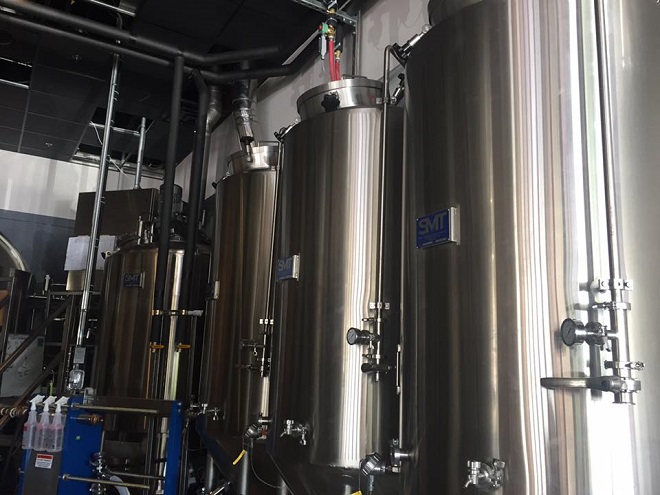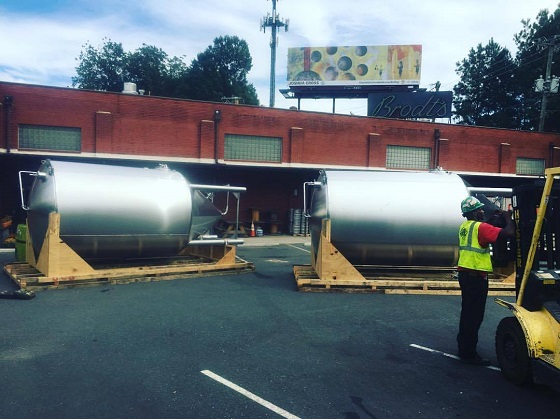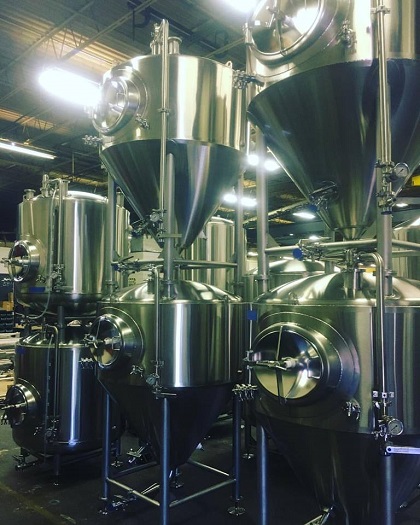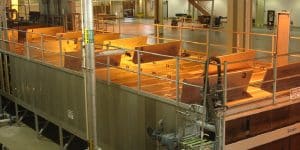 Large tanks are needed to store and transport liquid and dry material. From handling dry grains and various powders to holding hazardous liquids and potable water, containers must meet certain specifications to properly hold the material.
Large tanks are needed to store and transport liquid and dry material. From handling dry grains and various powders to holding hazardous liquids and potable water, containers must meet certain specifications to properly hold the material.
In this article, we’ll explore how dry tanks differ from liquid tanks and dive into how these differences impact various industries.
What’s the Difference between Dry and Liquid Tanks?
Given the wide variation in the contents of industrial tanks, it stands to reason that the tanks themselves must vary. Let’s take a moment to look at the differences between dry and liquid tanks and then turn our attention to some of the challenges faced by different industries and some possible solutions for these challenges.
Units of Measurement
One of the first things to look at is the units of measurement of the material you’re wanting to store. If it’s in tons or cubic feet, that’s an indication that it’s dry material. If it’s in gallons or cubic meters, it’s a liquid.
Corrosion and/or Material Degradation and Segregation
Generally, dry materials don’t corrode unless the dry material is prone to absorbing trace amounts of moisture. So when you see corrosion or you find that the material is prone to corrosion, then you know you need a liquid tank. With a liquid tank, you must consider how much corrosion is permissible. You should also be aware of the cathodic protection requirements that the vessel will need to meet.
Dry materials can be prone to degradation and segregation. A container that ensures that neither happens given the material it holds is a must.
Design
Liquid storage tanks come in a variety of designs.
- They are usually cylindrical.
- They may be perpendicular to the ground (vertical) or horizontal.
- They may have a fixed or floating roof. The floating roof rises and falls with the level of the liquid within the tank. This reduces the vapor space above the liquid.
- Liquid tanks may be open top or closed top.
- They can be flat-bottom, slope-bottom, cone-bottom or dish-bottom.
- Liquid containers are built to provide a thick protective shell that keeps the liquid from escaping or exterior elements from entering.
- Liquid tanks are built to meet the requirements of maintaining pH as well as varying temperature.
 There are four types of stainless steel storage tanks:
There are four types of stainless steel storage tanks:
- Bolted rolled, tapered panel (RTP) storage tank
- Shop-welded storage tank
- Field-welded storage tank
- Hybrid strong tank
Dry storage tanks come in a variety of designs as well.
- They can be built as an upright silo or in a horizontal position.
- Some dry containers are flat-bottom. The flat-bottom dry tanks are built with wood or steel flooring and can hold up to 2,000,000 cubic feet.
- All dry tanks are designed to be airtight in order to hinder outside elements from damaging the material inside the container.
Foundation Requirements
In terms of foundation requirements, liquid and dry storage tanks are the same. The tanks often need a foundation. The contents of the container play a role in the type of foundation needed. Types of tank foundations:
- Concrete slab
- Concrete ring wall with compacted fill
- Steel bottom with external saddles
- Base setting ring
Composition
Most dry cargo containers are made of stainless steel with aluminum and polyurethane as a protective layer. Some tanks are made entirely of aluminum and can hold a larger amount of product.
For liquid storage stainless steel is most common. Concrete is used as well. Other materials that can be used for the storage tank are thermoplastic, glass-reinforced plastic, and polyethylene. These materials are suitable for specialty chemicals because of their greater chemical resistance and lower cost to build.
Standards
Storage tanks must meet many environmental regulations that dictate the design and operation of the tank. This, of course, depends upon the contents that are to be stored in the vessel.
Prior to use, tanks must be inspected and approved by the classification society. Most dry tanks are made to meet ISO standard so that they can be used for various types of transport, whether by truck, train, ship, etc. Liquid tanks may need to meet NSF, AWWA, NFPA, API 650, AISC and other standards. Further, liquid storage tanks are tested to meet air emissions requirements.
What are Some of the Challenges Industries Face When it Comes to Storage Tanks?
Every industry faces its own unique set of challenges. These challenges can be met with innovative solutions in the design of the tank.
Food and Beverage

Beyond that, this industry faces a wide range of challenges in terms of storage. You may need a dry storage tank or a liquid vessel depending upon the contents being stored. This industry uses storage tanks, mixing tanks, cook tanks, pressure tanks, evaporators, and dryers to suit a particular purpose.
Petroleum
When it comes to the petroleum industry, manufacturers of storage tanks must contend with challenges that can prove to be harmful and downright fatal. One such challenge is the flash point.
Flashpoint is the temperature at which a liquid produces enough flammable vapor to ignite when it comes in contact with a spark or flame. A good rule of thumb: The lower the flash point, the great the risk of fire.
Two petroleum products, ethanol, and gasoline have low flashpoints. In order to mitigate the low flash point, tanks are built with an internal floating roof (IFR). Generally, these vessels are the basic cone roof tank. The floating roof is inside of it. The floating roof moves up and down with the liquid level and traps the vapor above it.
Crude oil and certain petroleum products, such as kerosene, naphtha, and diesel have medium flashpoints. These materials are placed in external floating roof (FR) tanks to solve the medium-flashpoint problem.
Coal Mining
One of the main problems with coal storage is the material bridging within the silo. The solution for this is to ensure a reliable material flow. You also need a custom-designed chisel hopper, which will help solve this problem.
Chemicals and Other Potentially Volatile Substances
Chemical storage has a long list of variables to consider, such as:
- Thermal expansion
- Corrosion
- Chemical resistance
- Operating pressure requirements
- Material purity
- Vacuum requirements
- Nonreactive coatings and linings
- Operating environment
For chemicals, it’s necessary to custom build your container to meet the specific requirements of the chemical.
Tank Manufacturers’ Best-Kept Secret
Customers often get what the tank manufacturers have available. Manufacturers funnel the product they give their customers through the types of storage tanks they already have and within the confines of their designs. Undoubtedly, the result is that the product is according to what the manufacturer has available and not according to the clients’ needs.
Fortunately, the industry is changing. More manufacturers are providing storage tanks that better suit the needs of the customer.
Choose Tanks Made in America
Smart Machines Technology’s tanks are all made in the USA. Because the tanks are conveniently manufactured in the US, clients don’t have to contend with steep shipping costs and long wait times. Contact SMT and get high-quality, American-made tanks.
Contact Us To Learn More





 Contract
Contract Food & Bev
Food & Bev